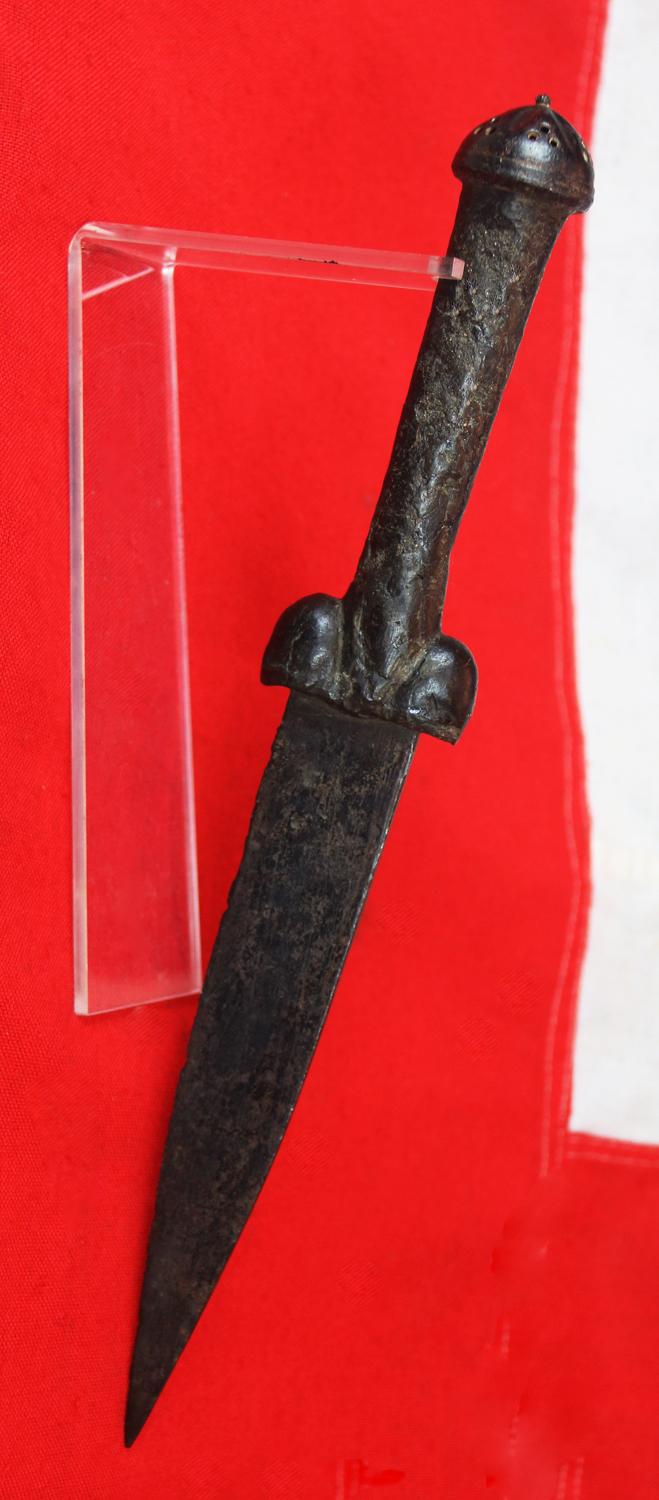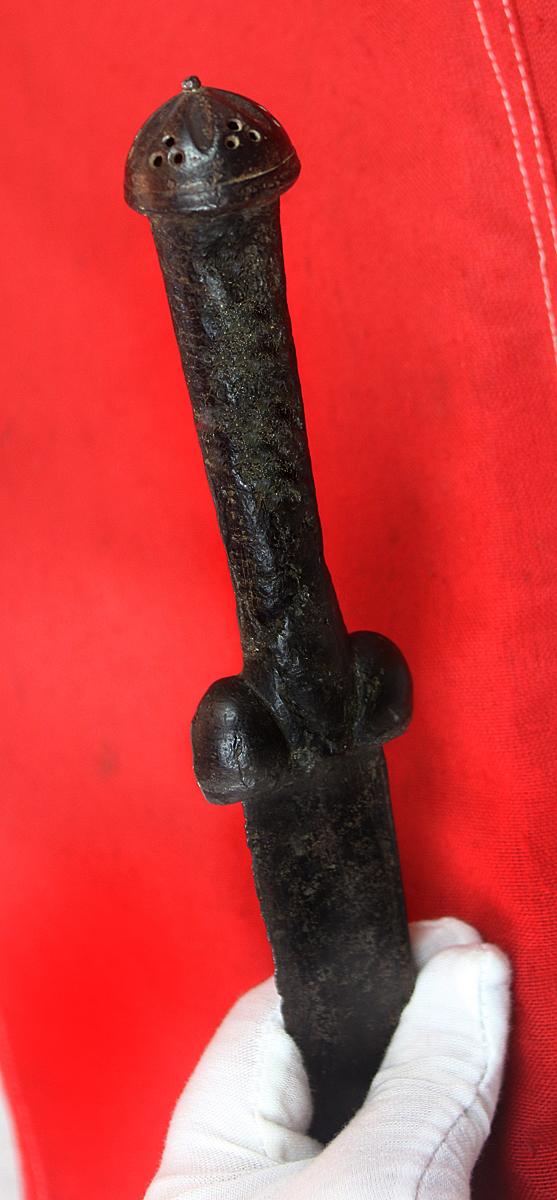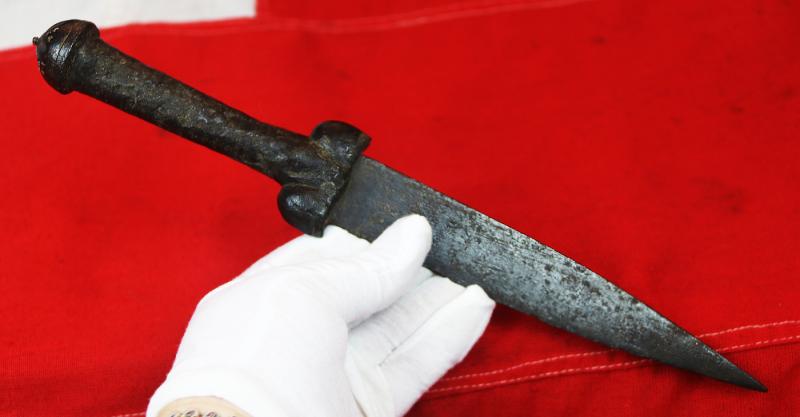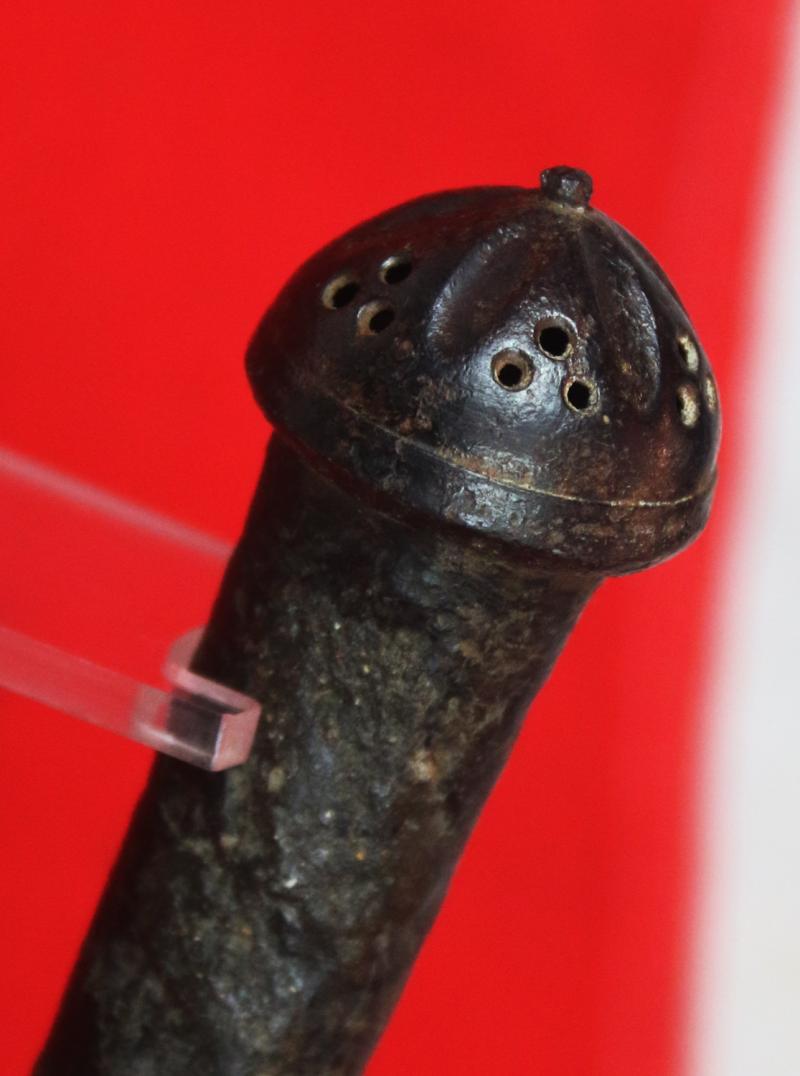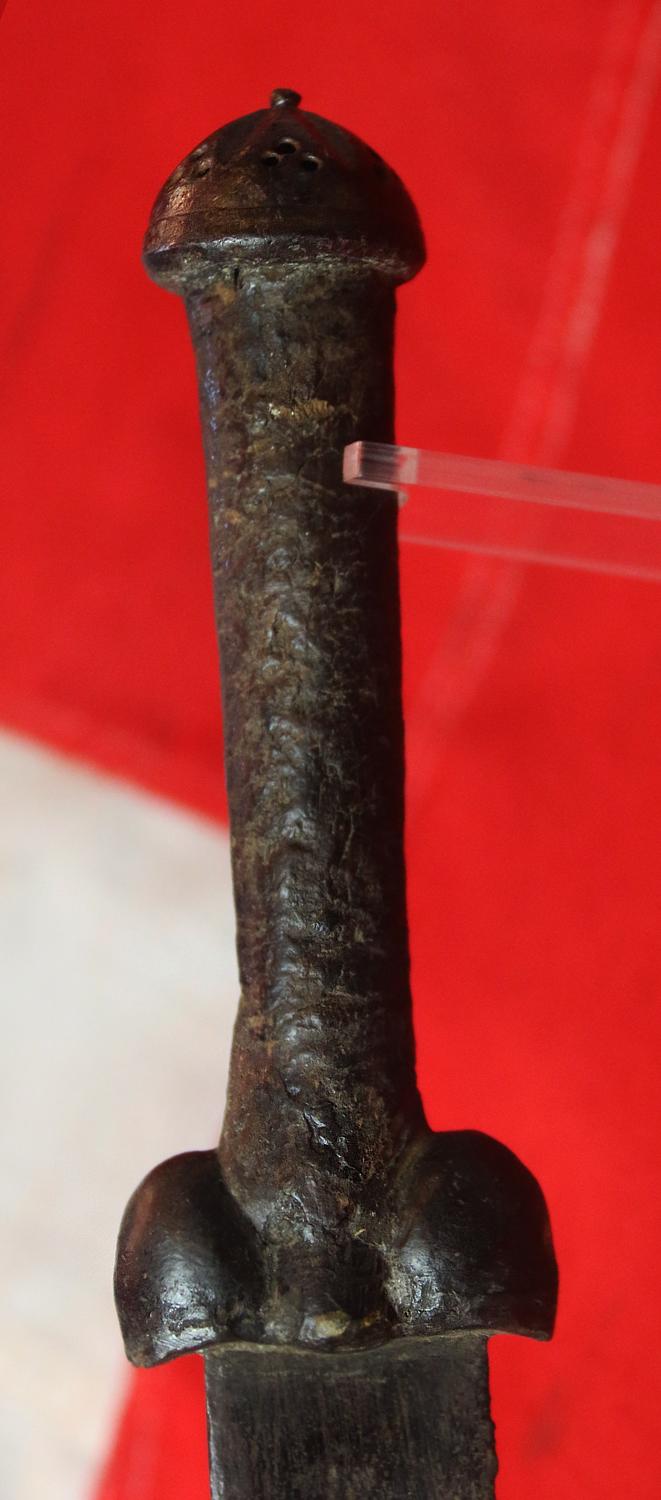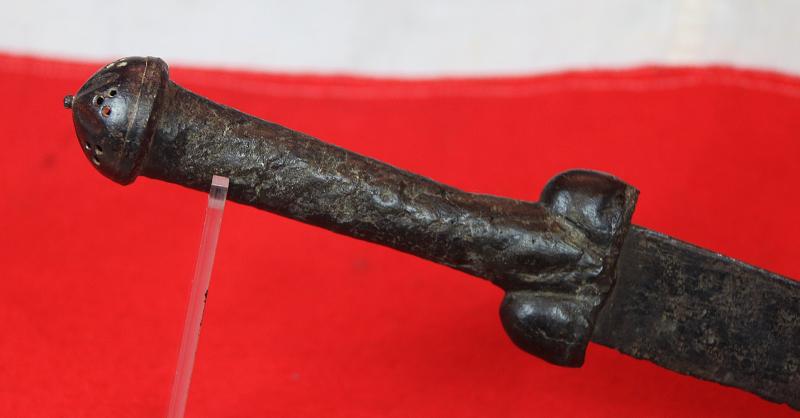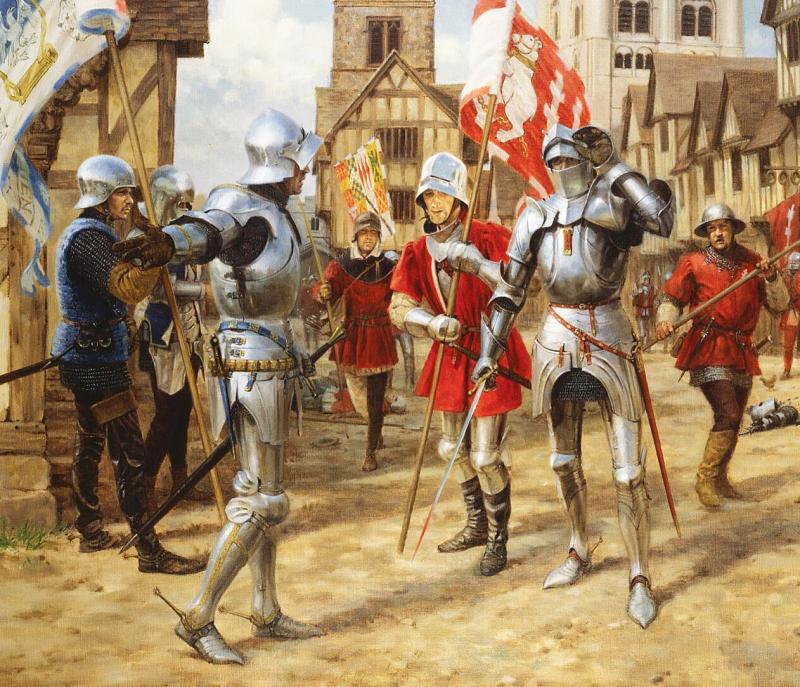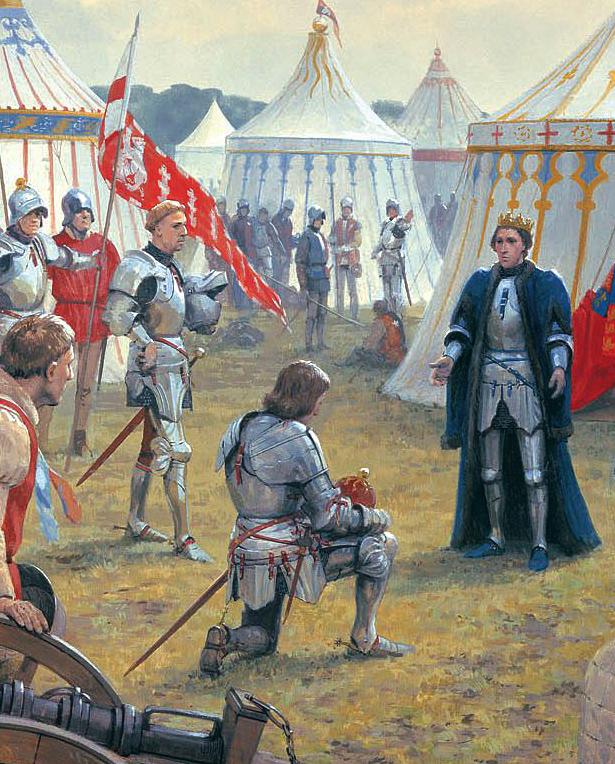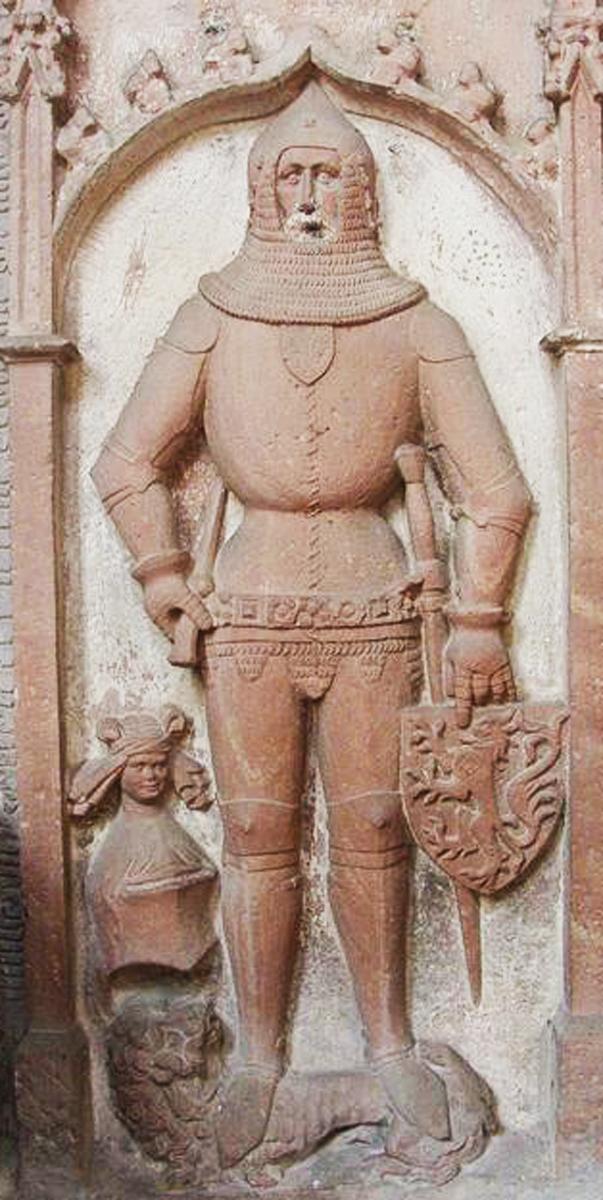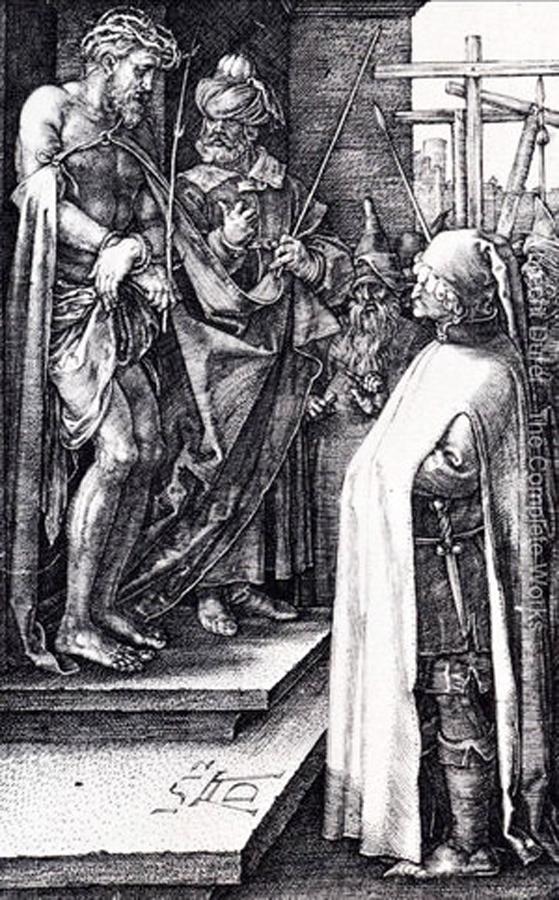An Original Museum Piece, A King Richard IIIrd & Henry VIIth Period, From the War of the Roses, an Original Yorkist or Lancastrian Ballock Dagger
15th century. What a most fabulous original piece of ancient British Medeavil history. With an iron armour piercing blade, and a traditional ballock dagger hilt with pierced domed crown pommel, a crown most reminiscent of a version of the medeavil crown of Edward the Confessor. Overall in superb condition for age.
It is a very rare opportunity to acquire such a wonderful, original, and beautiful historical piece, especially in such good condition
A bollock dagger or ballock knife is a type of dagger with a distinctively shaped hilt, with two oval swellings at the guard resembling male testes with additional iconic features of this style of dagger. The guard is often in one piece with the wooden grip, and reinforced on top with a plain or shaped pommel. This finest example has the high ranked piercred iron dome pommel, with a chisselled stylised rose flower design set with a small ball final.
There are just a few 15th century Ballock daggers just as this this in the Royal Collection.
The dagger was popular in Scandinavia, Flanders, Wales, Scotland and England between the 13th and 18th centuries, in particular the Tudor period. Within Britain the bollock dagger was commonly carried, including by Border Reivers, as a backup for the lance and the sword. Many such weapons were found aboard the wreck of the Mary Rose. The bollock dagger is the predecessor to the Scottish dirk.
Styles of ballock daggers varied considerably. The dagger blade tapered to a point, with some having a single-edge, and others a double-edge. Some had thicker blades of diamond cross-section.
Ballock daggers were often carried at the right hip, and they were primarily used in close combat by nobles and crude simpler examples for common foot soldiers.
The ballock dagger's strong, pointed blade was useful for stabbing and seeking out the weak points in armour, such as the helmet visor, armpit, and the groin.
The Wars of the Roses were a series of dynastic wars for the throne of England. They were fought between supporters of two rival branches of the royal House of Plantagenet, the Houses of Lancaster and York. They were fought in several sporadic episodes between 1455 and 1487, although there was related fighting before and after this period. The conflict resulted from social and financial troubles that followed the Hundred Years' War, combined with the mental infirmity and weak rule of Henry VI, which revived interest in the alternative claim to the throne of Richard, Duke of York.
The final victory went to a claimant of the Lancastrian party, Henry Tudor, who defeated the last Yorkist king, Richard III, at the Battle of Bosworth Field. After assuming the throne as Henry VII, he married Elizabeth of York, the eldest daughter and heiress of Edward IV, thereby uniting the two claims. The House of Tudor ruled England and Wales until 1603. Queen Margaret and her son had fled to north Wales, parts of which were still in Lancastrian hands. They later travelled by sea to Scotland to negotiate for Scottish assistance. Mary of Gueldres, Queen Consort to James II of Scotland, agreed to give Margaret an army on condition that she cede the town of Berwick to Scotland and Mary's daughter be betrothed to Prince Edward. Margaret agreed, although she had no funds to pay her army and could only promise booty from the riches of southern England, as long as no looting took place north of the River Trent.
The Duke of York left London later that year with the Earl of Salisbury to consolidate his position in the north against the Lancastrians who were reported to be massing near the city of York. He took up a defensive position at Sandal Castle near Wakefield over Christmas 1460. Then on 30 December, his forces left the castle and attacked the Lancastrians in the open, although outnumbered. The ensuing Battle of Wakefield was a complete Lancastrian victory. Richard of York was slain in the battle, and both Salisbury and York's 17-year-old second son, Edmund, Earl of Rutland, were captured and executed. Margaret ordered the heads of all three placed on the gates of York.
The last picture in the gallery is an engraving by 15th century to early 16th century Old Master, Albrecht Durer, depicted by him in it, is one subject carrying a superbly detailed ballock dagger at his hip. Another picture is of a Medieval tombstone carving, similarly showing the knight’s ballock dagger, being held by his right hand.
Overall 12.5 inches long. It will be accompanied by a complimentary display stand. It could also look stunning if enclosed in a bespoke glazed frame case.
Every single item from The Lanes Armoury is accompanied by our unique Certificate of Authenticity. Part of our continued dedication to maintain the standards forged by us over the past 100 years of our family’s trading, as Britain’s oldest established, and favourite, armoury and gallery
Code: 24763

